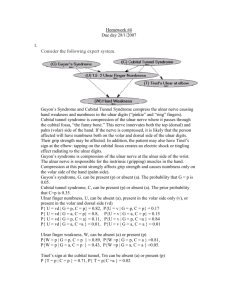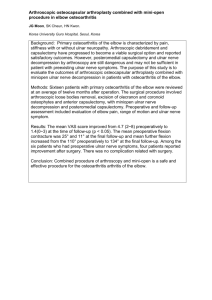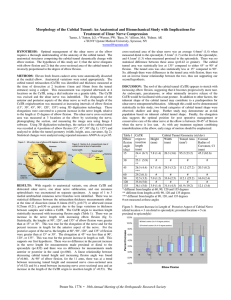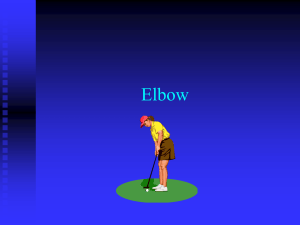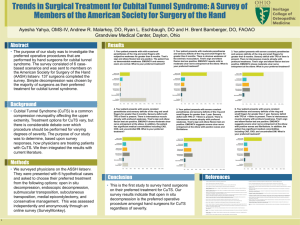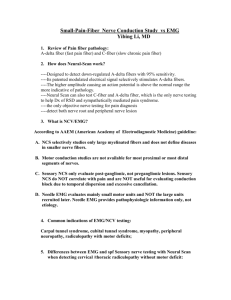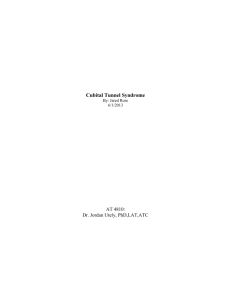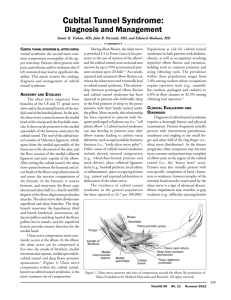Erin K. Greer, MD
advertisement
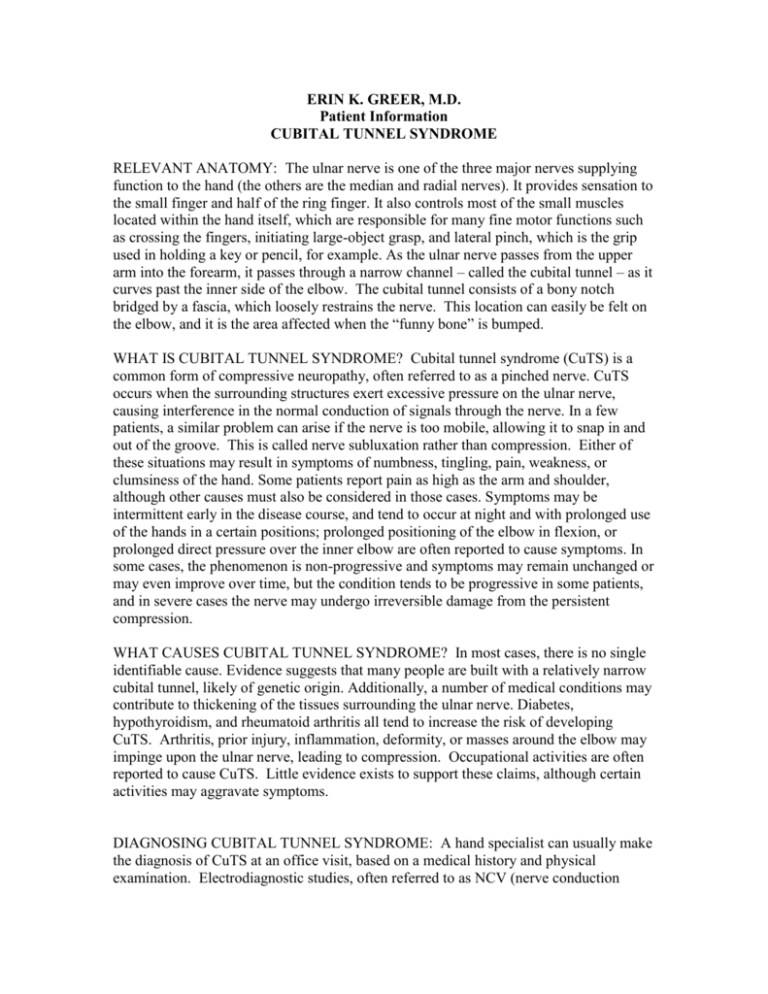
ERIN K. GREER, M.D. Patient Information CUBITAL TUNNEL SYNDROME RELEVANT ANATOMY: The ulnar nerve is one of the three major nerves supplying function to the hand (the others are the median and radial nerves). It provides sensation to the small finger and half of the ring finger. It also controls most of the small muscles located within the hand itself, which are responsible for many fine motor functions such as crossing the fingers, initiating large-object grasp, and lateral pinch, which is the grip used in holding a key or pencil, for example. As the ulnar nerve passes from the upper arm into the forearm, it passes through a narrow channel – called the cubital tunnel – as it curves past the inner side of the elbow. The cubital tunnel consists of a bony notch bridged by a fascia, which loosely restrains the nerve. This location can easily be felt on the elbow, and it is the area affected when the “funny bone” is bumped. WHAT IS CUBITAL TUNNEL SYNDROME? Cubital tunnel syndrome (CuTS) is a common form of compressive neuropathy, often referred to as a pinched nerve. CuTS occurs when the surrounding structures exert excessive pressure on the ulnar nerve, causing interference in the normal conduction of signals through the nerve. In a few patients, a similar problem can arise if the nerve is too mobile, allowing it to snap in and out of the groove. This is called nerve subluxation rather than compression. Either of these situations may result in symptoms of numbness, tingling, pain, weakness, or clumsiness of the hand. Some patients report pain as high as the arm and shoulder, although other causes must also be considered in those cases. Symptoms may be intermittent early in the disease course, and tend to occur at night and with prolonged use of the hands in a certain positions; prolonged positioning of the elbow in flexion, or prolonged direct pressure over the inner elbow are often reported to cause symptoms. In some cases, the phenomenon is non-progressive and symptoms may remain unchanged or may even improve over time, but the condition tends to be progressive in some patients, and in severe cases the nerve may undergo irreversible damage from the persistent compression. WHAT CAUSES CUBITAL TUNNEL SYNDROME? In most cases, there is no single identifiable cause. Evidence suggests that many people are built with a relatively narrow cubital tunnel, likely of genetic origin. Additionally, a number of medical conditions may contribute to thickening of the tissues surrounding the ulnar nerve. Diabetes, hypothyroidism, and rheumatoid arthritis all tend to increase the risk of developing CuTS. Arthritis, prior injury, inflammation, deformity, or masses around the elbow may impinge upon the ulnar nerve, leading to compression. Occupational activities are often reported to cause CuTS. Little evidence exists to support these claims, although certain activities may aggravate symptoms. DIAGNOSING CUBITAL TUNNEL SYNDROME: A hand specialist can usually make the diagnosis of CuTS at an office visit, based on a medical history and physical examination. Electrodiagnostic studies, often referred to as NCV (nerve conduction velocity) and EMG (electromyography) testing are usually obtained to confirm the diagnosis, determine the severity of the disease, and exclude other nerve problems. In unclear cases, the diagnosis may be difficult even with these methods. In such cases, conservative treatments are generally attempted and surgery is less desirable. TREATMENT OF CUBITAL TUNNEL SYNDROME: In general, the treatment options for CuTS include elbow padding or splinting, and cubital tunnel ulnar nerve release surgery. Use of a pad or brace to hold the elbow in an extended position can minimize the pressure on the ulnar nerve, and many patients find that such methods provide satisfactory symptom reduction and reduce nighttime awakening. Overall, many patients with CuTS ultimately choose to undergo cubital tunnel release (CuTR) surgery. Surgery is justified if examination or electrodiagnostic studies indicate severe disease with loss of nerve cells, or if a patient's symptoms are not acceptably relieved by nonsurgical treatments. CuTR is one of the more common and effective surgeries performed by hand surgeons, and success rates over 80% are expected when the procedure is performed properly and on the appropriate patients. Relief of pain and nighttime symptoms is almost always accomplished. So long as nerve damage is not present preoperatively, return of sensation and strength should occur, although the recovery process may take several months to complete. With more severe disease, some degree of permanent numbness and weakness should be expected, and permanent atrophy of the hand muscles may occur, but CuTR may still provide worthwhile improvement and should at least halt the disease from causing further damage to nerve function. The conventional method of CuTR is the open technique. Open CuTR is an outpatient surgery, usually performed under regional or general anesthesia, using an incision approximately two to three inches in length over the inner aspect of the elbow. The fascia covering the ulnar nerve is incised, and the cut margins separate to open the cubital tunnel, expanding its volume and relieving pressure on the nerve. The skin incision is then sutured. In the hands of an experienced hand surgeon, the procedure takes only 15 to 20 minutes. Sutures are removed within two weeks. Restrictions on use of the limb are lifted after the incision has healed, but it may take two to three months for residual soreness and weakness of the elbow to resolve. In the past, the ulnar nerve was not simply released, but also mobilized over a few inches of its length and moved forward permanently out of the cubital tunnel. While that technique, called ulnar nerve transposition (UNT), is quite effective, it is a more significant surgery associated with more pain, slower recovery, and a higher possibility of wound complications. Recent research has revealed that simple CuTR without nerve transposition is as effective as UNT in almost all cases. In patients with ulnar nerve hypermobility or sublulxation, the UNT procedure is still favored.

